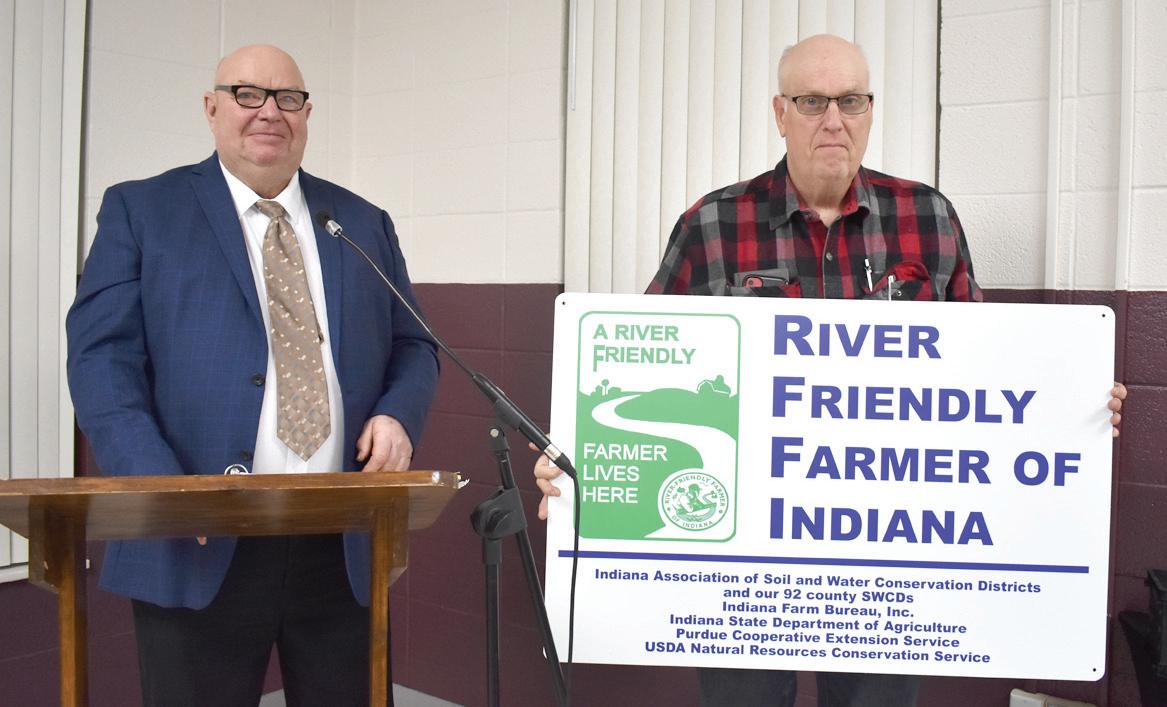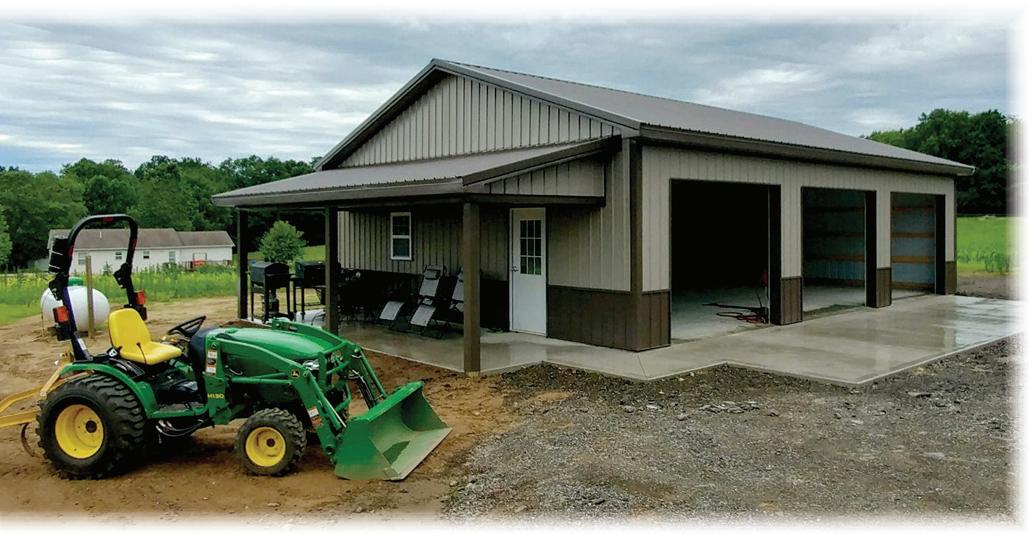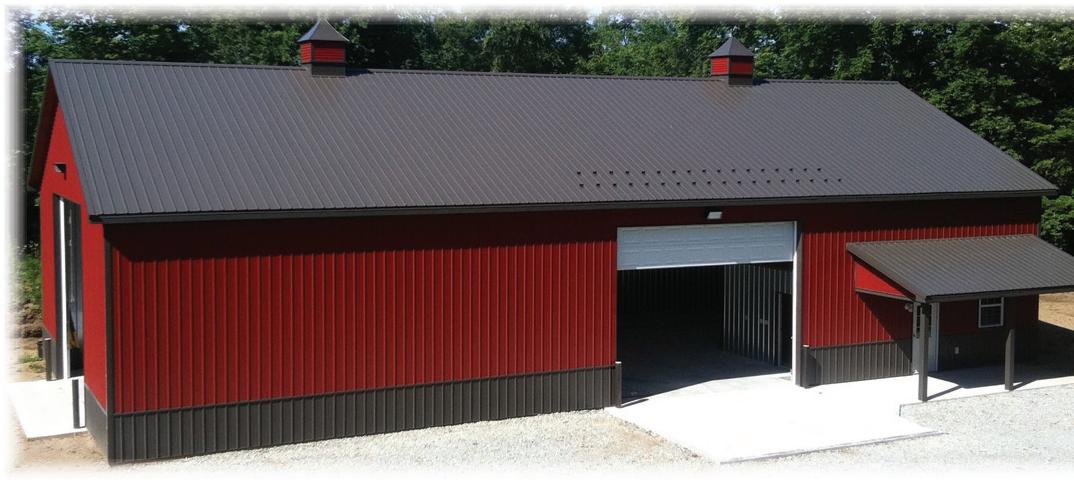
2 minute read
Riddle lauded by SWCD for no-till farming
During the 83rd annual Fulton County Soil and Water Conservation District banquet held in February 2023, SWCD Supervisor Mike Norman presented Duane Riddle with the State of Indiana River Friendly Farmer Award and the Joe Kroft Conservation Award for his implementation of conservation practices such as no-till farming, cover crops and rotational grazing for his cattle.
“Riddle uses intensive halfrotational grazing and feed lots. These best management practices have helped benefit his farm because he has been able to make more money. It also provides 100% cover and sequesters carbon,” said Norman, who quoted Riddle as saying “All no-till for years and planting green works. I don’t know for the life of me why I would do anything different. I’ve been doing it right for 30 years.”
Riddle credits predecessors such as George Krom III, Glen Jones, Kroft and others for “doing all the research for me. I didn’t have to waste my time failing.” Kroft, he noted, was “no tilling when no one else was,” and it is “quite and honor,” he added, to receive the award with his name. Riddle exhorts more farmers to follow their example, not only for the sake of the environment, but for their own yields and soil health. “We’re creatures of habit,” he said. However, to be a successful no-till farmer, he added, “you have got to think different. Stop looking at your neighbor. … Find smart people and learn from them.”
Riddle recalled his first exposure to no-till farming came in high school, when his agriculture teacher took the class on a field trip to see a field where it appeared the farmer “forgot to plow. … Grass was up to our waste in places. To this day I don’t know how he got his seed in the ground.” The farmer was undoubtedly the subject of jokes from his neighbors; however, Riddle said, “He had a million reasons why he didn’t care.”
When Riddle started no-till farming, he worried his hard clay soil could not be properly planted without tilling. Jones, he said, showed him how it could be done. He was soon planting right into soybean rows, the stubble providing a “perfect seed bed for corn.” He soon realized a “perfect stand” and “zero yield loss. … I didn’t need 180 horsepower and fourwheel drive. I had zero problems and I continued to do that.”
No-till planting into corn stalks was “even easier and better.”
“Every time you perform tillage you are releasing carbon into the air.” Not only is carbon a greenhouse gas, but it is also a primary ingredient in healthy soil. No-till sequesters carbon into the soil. Furthermore, according to Riddle, “The water holding capacity goes through the roof. You get that hummus level up, and it increases drought tolerance. Every drop of water will soak in.”
The Earth’s crust, Riddle explained, contains only a thin layer of topsoil. “We don’t manage it very well. We need to preserve the topsoil for future generations.”
The Mississippi River near New Orleans “looks like chocolate milk,” Riddle observed, the result of sediment run off. “There’s no reason for it. We need to eliminate that.”
“One thimble full of topsoil contains more microorganisms than there are people on the planet,” said Riddle. However, constant application of chemicals and tilling degrades soil health, and creates a self-perpetuating problem.
Last fall, Riddle planted cereal rye, which can grow up to seven feet tall in places. This helps retain moisture and
Riddle lauded




Continued from page 8 weeds. Meanwhile the bacteria and earthworms are performing all the tillage he needs, without, he added, running an expensive tractor burning gas at up to $5 per gallon. However, he emphasized, “You’ve got to get the biological elements kick started.” We should be “feeding the microbes,” he insists, “not killing them.”


Recalling the words of a plant physiologist he knows, Riddle is also not in a big hurry to plant. “Wait till the ground warms up. The corn will jump out of the ground so fast your head will spin.”











